Table of Contents Show
Since her introduction in 1992, Harleen “Harley Quinn” Quinzel has become one of the most recognizable characters in comic book history.1 Though she has had some appearance changes over the years, her personality remains the same: Joker’s lover (sometimes ex-lover) with an affinity for theatrics and a bubbly yet terrifying disposition.
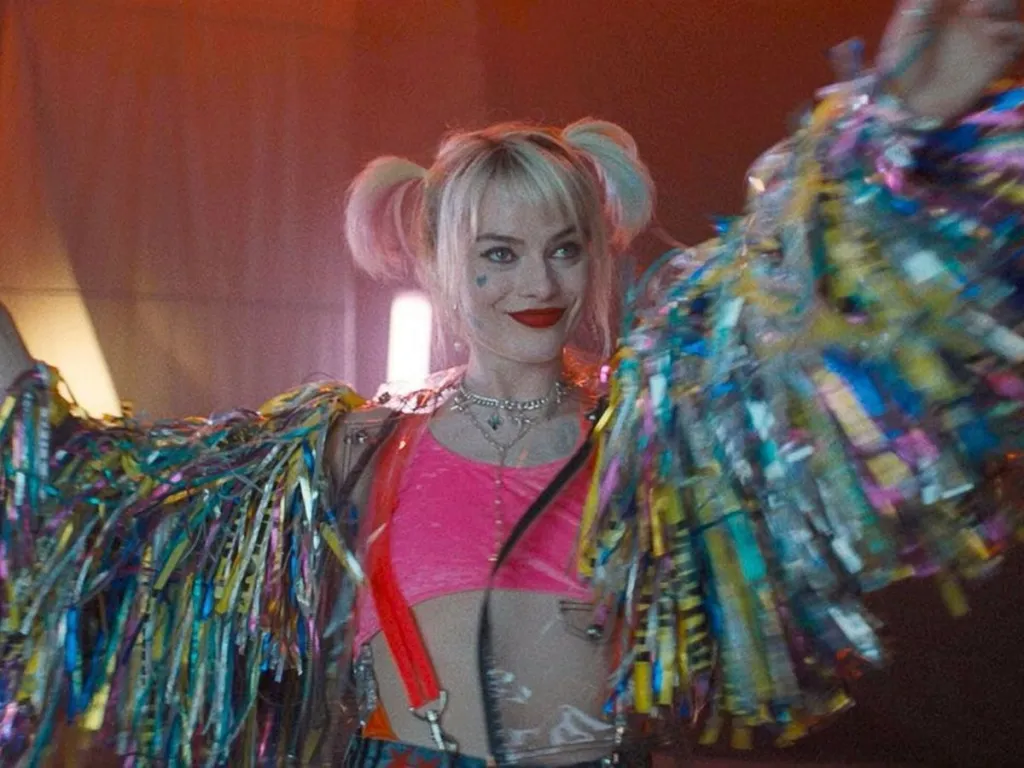
Her popularity only grew as she transitioned from television to comics to film, making her easily accessible through different artistic mediums. Despite this popularity, there is a common problem of sexualization within her film depictions specifically which extends to the romanticization of her notoriously toxic relationship with Joker.
Several cinematic depictions of Harley Quinn fail to acknowledge her as a victim of the male gaze and a survivor of domestic abuse, often resorting to sexualizing or infantilizing her to appeal to male audiences.
Harley Quinn’s Evolution: From Henchwoman To Hollywood Icon
Harley Quinn has a nontraditional history as a comic book character. First introduced in Season 1, Episode 7 of Batman: The Animated Series2 as a one-off comic relief character, Harley Quinn soon became beloved and received multiple one-shot comic books before being ingrained into DC Comics officially in 19993.
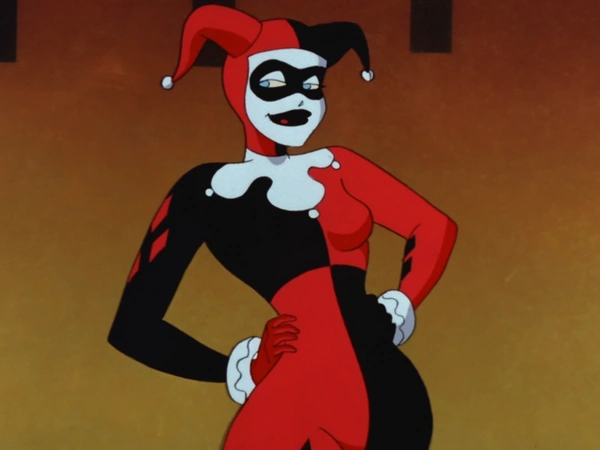
Her popularity grew, appearing in video games and more animated DC shows. Harley Quinn eventually became one of DC’s most profitable characters of all time and maintains that title today. As time went on, her image began to get distorted and the focus of her character became her appeal to men instead of her plots against Batman and her relationship with the Joker.
This would be most evident in her very first film appearance.
Suicide Squad (2016): Rocky Beginnings
While David Ayer’s blockbuster Suicide Squad (2016) performed poorly in the eyes of critics and fans,4 there is no doubt that it contains one of the most iconic depictions of Harley Quinn in the character’s history. It’s no surprise that it was a staple Halloween costume of the time5.
Her iconic pink and blue dip-dye hairstyle is still seen in depictions of the character to this day, most recently in her self-titled animated series on MAX6. Her costuming is only aided by Margot Robbie‘s stellar performance, bringing the character to life with her charm.
“The Male Gaze ” — Harley Quinn’s Role As An Object
Despite her iconic look, the treatment of Harley Quinn in this film is indicative of Laura Mulvey’s theory on the male gaze and how women are expected to act in order to be appealing to men. In her essay “Visual Pleasure and Narrative Cinema,” Mulvey asserts there are two categories when it comes to the act of looking: the active male and the passive female.
The male characters are the bearers of the “look” while the female is the “image” being looked at. Mulvey says that a woman’s presence can detract from the plot’s development and “freeze the flow of action”7 to instead gain pleasure from a woman as an erotic object. The male gaze can be entirely attributed to Harley Quinn’s perception by others such as the guards at Belle Reve and her interactions with her mostly male teammates.
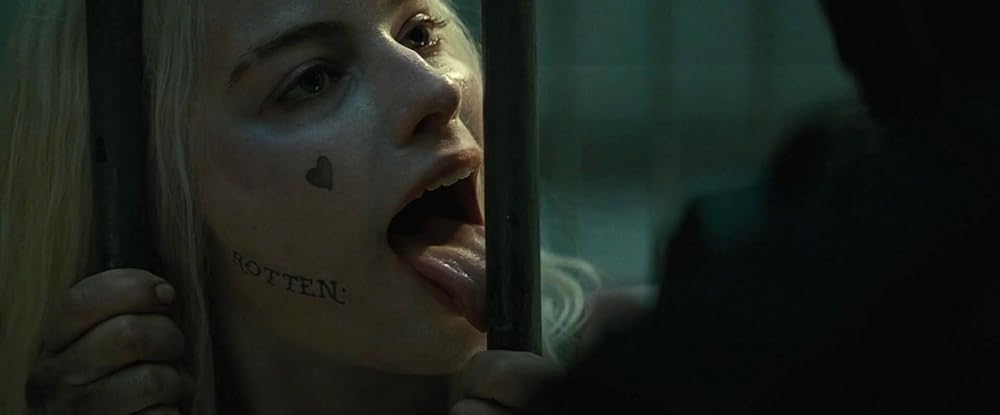
This depiction of Harley Quinn falters severely in its representation of a mentally ill victim of abuse. In the first five minutes of the film, Harley is harassed verbally by guards at Belle Reve, where she is imprisoned8. She is referred to as “a whole lotta pretty and a whole lotta crazy,” and flashbacks reveal the guards made fun of her as she was put behind bars.
While compelling in terms of a villain character getting their comeuppance for their actions, it is deeply uncomfortable to see a woman get objectified and belittled by men in a position of power over her. She makes snide remarks to these guards as they look at her in her cell, asking if they will “play with her.”
These types of remarks can be read as a question of authority because of how the guards have treated Harley Quinn in Belle Reve, but it more so reads as the infantilization of a female character to further perpetuate the male gaze Mulvey discusses.
Harley Quinn’s Relationship With Joker
During her introduction scene, “You Don’t Own Me” by Lesley Gore is heard, asserting Harley’s desire to escape prison and be with her lover, Joker (whom she refers to as “Puddin.”) However, this empowering song is contradicted by her only goal throughout the film: to be with Joker again.
Harley’s arc throughout the entire film revolves around returning to her partner and being obedient to him. Harley Quinn has been portrayed as a victim of abuse from her inception, with a one-shot comic book chronicling her manipulation and subsequent abuse by Joker released shortly after her initial appearance in BtAS9.
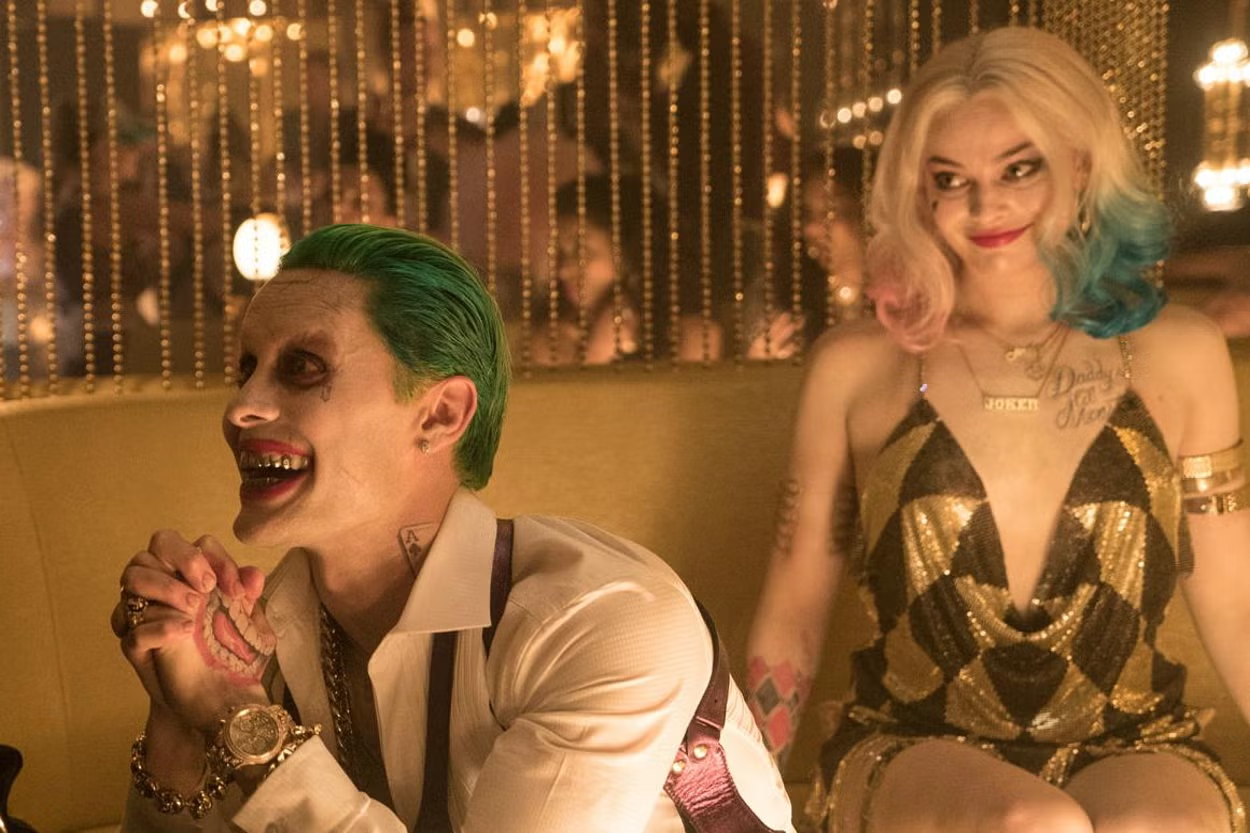
Portraying her codependency towards Joker in her first major film is reductive to her history and sets a low bar for portrayals of abuse victims in media. Harley never questions Joker or his actions; in fact, fans often romanticize their relationship10 which the film reinforces.
Throughout the rest of the film, she is subject to the male gaze by her fellow teammates as well as the camera itself. An iconic scene in which she dons a “Puddin” choker, as well as sequined hot pants and a “Property of Joker” jacket, is shot solely for the male audience members to ogle Harley’s (and by extension, Margot Robbie’s) body.
While iconic, her costume is indicative of her apparent ownership by Joker and her appeal to men both in and watching the movie. As seen in her later films, her costumes become more realistic in terms of wearability and comfort, while maintaining her vibrant style.
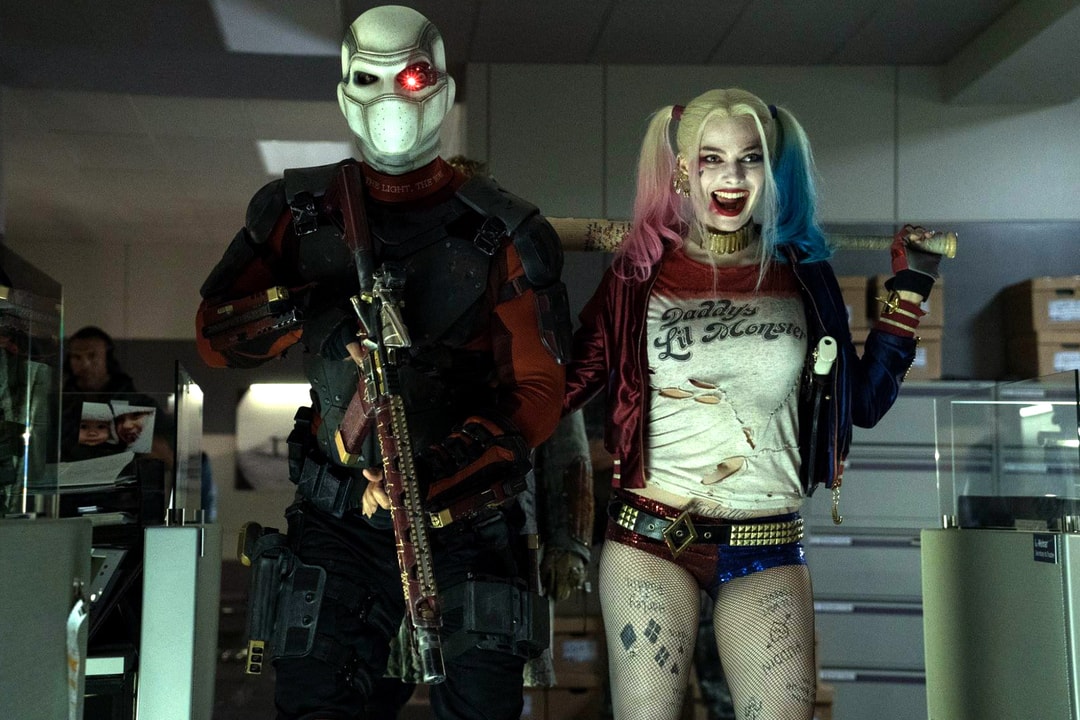
In Suicide Squad, there is a clear effort to appeal to male sensibilities when it comes to female characters and even more so female superheroes. Additionally, this version of Harley is incredibly harmful because, as a PG-13 movie, it attracted the attention of young audiences who may view this portrayal as normal rather than recognizing it as the problematic representation of mental illness and sexuality that it is.
Near the third act of the film, Harley’s plan to reunite with Joker succeeds, but she is thrown out of the helicopter the two are escaping in as Joker seemingly dies in the process. This scene can be interpreted in different ways because it does not explicitly show that she was let go on purpose or by accident.
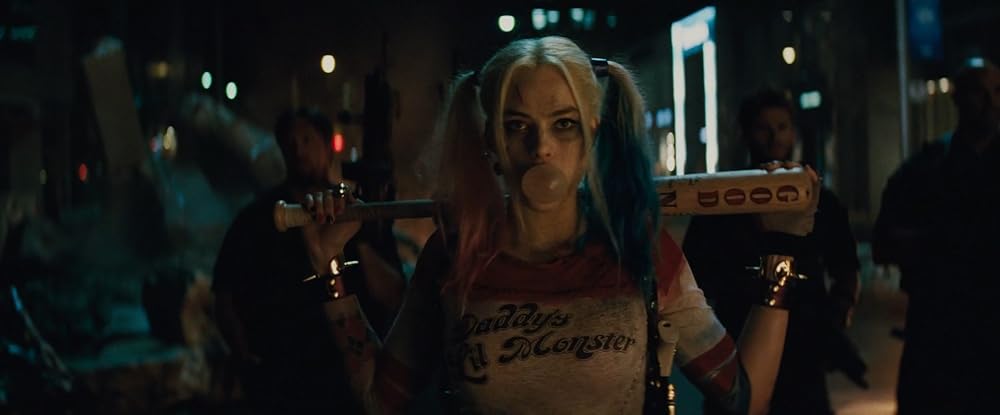
If Joker let go of her on purpose, it would imply he was getting rid of her for good as he dies in the explosion. If he accidentally let go of her, it would be a tragic ending to their love story with Harley figuring out how to move forward without the man she loves. This calls back to an earlier flashback scene where Joker asks Harleen if she would:
“live for [him].”
Multiple scenes like this imply that Joker is manipulative of Harley and that Harley often alters events in her mind to fit the narrative that Joker loves her. Unfortunately, there is no payoff to these scenes, as Joker breaks Harley out of prison at the end of the film so the two can be together again.
Suicide Squad’s Harmful Portrayal Of Harley Quinn
Suicide Squad is Harley Quinn’s first big screen appearance and remains far from perfect. She is warped from a complex abuse victim into Joker’s unquestioning partner in crime. The filmmakers intend to appeal to the largely male audience that the film was already geared towards.
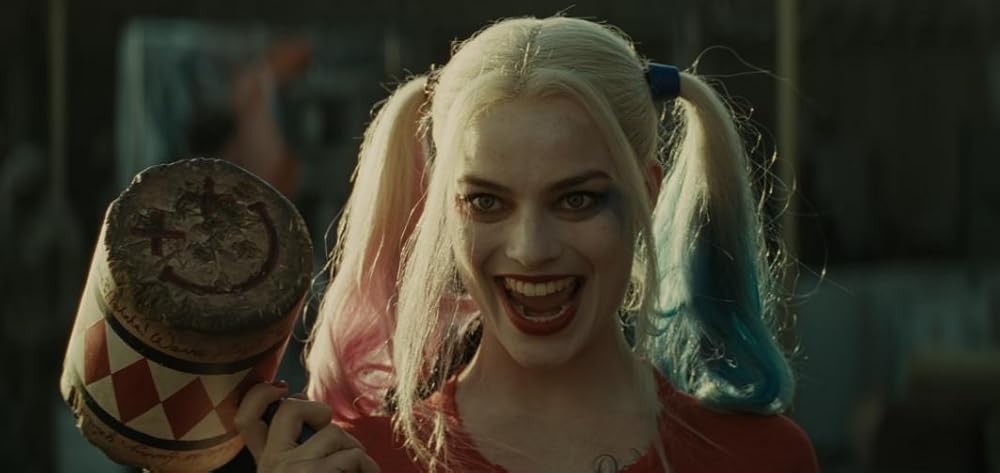
In addition, Mulvey’s understanding of how men look at women in film applies seamlessly to Harley’s depiction in the film, which perpetuates unfair expectations of women as nothing more than sex objects.
As one of the few female characters in the film, she is a hypersexualized mentally ill woman with a thirst for violence. This iteration of Harley Quinn disrespects women of all ages by portraying her toxic relationship as aspirational while sexualizing her for the benefit of men.
Birds Of Prey (2020) As A Rejection Of The Male Gaze
Harley Quinn’s second film appearance is wildly different from that of Suicide Squad. Birds of Prey (and The Fantabulous Emancipation of One Harley Quinn) looks deeper at her personality and significantly shifts how female characters are portrayed, particularly because the film was both written and directed by women, Christina Hodson and Cathy Yan, respectively.
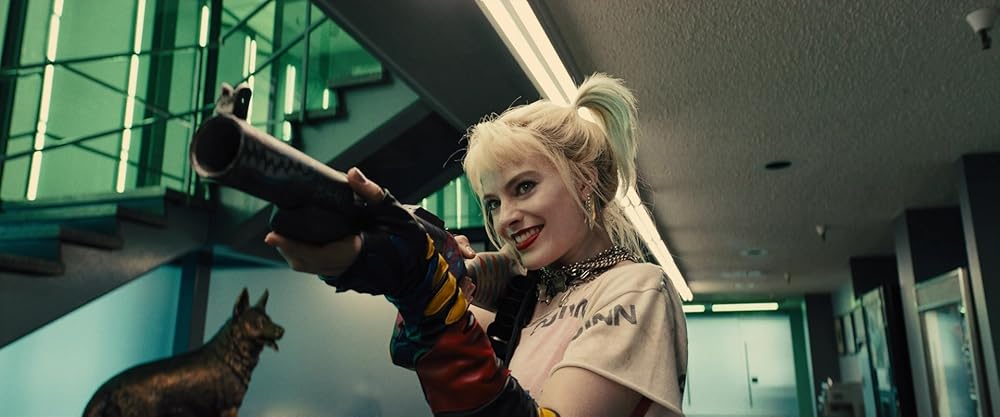
The film chronicles Harley’s misadventures following her public break-up with Joker, effectively taking away her shield against people who hold grudges against her11. Contrary to her previous film, Harley has a meaningful arc that emphasizes her independence and how that independence affects her.
“A Woman Emancipated” — Harley Quinn’s Agency In Birds of Prey
In this iteration, Harley is portrayed as more of a sympathetic anti-hero than the hypersexualized villain of her earlier depictions. She spends the entirety of the film dealing with the danger that comes with her independence from Joker and her insecurities about her place in the world.
This is the most vulnerable portrayal of Harley Quinn in cinema, as it deals with her anxiety stemming from her codependency with her ex-boyfriend. A key scene in the movie features a drunk Harley rambling to Black Canary about how “a harlequin is nothing without a master” and how she is on her own for the first time in a long time.
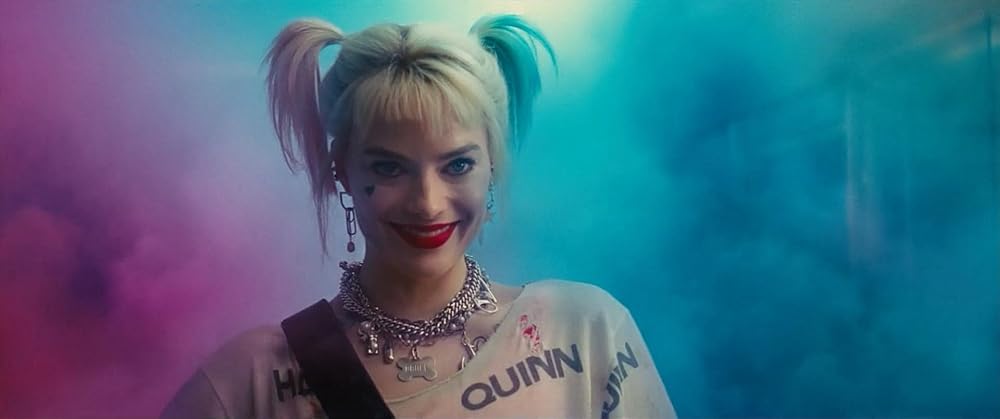
This is a key reason why the film resonated with so many women, as leaving a toxic partner can be scary and anxiety-inducing. While Harley is not depicted as a perfect victim — she has people with understandable grievances chasing her during the film – it is important to humanize Harley and give her empathy for the abuse she faced.
Birds of Prey became a crucial comic book film for women because it discussed problems that real women face with comic book characters that are often sexualized through a male lens. Birds of Prey breaks the mold set by comic book movies when it comes to female characters by rejecting the male gaze and how men expect women in superhero movies to act. This approach did not go over well with male audiences, who contributed to an unfounded belief that the movie is “anti-man.”12
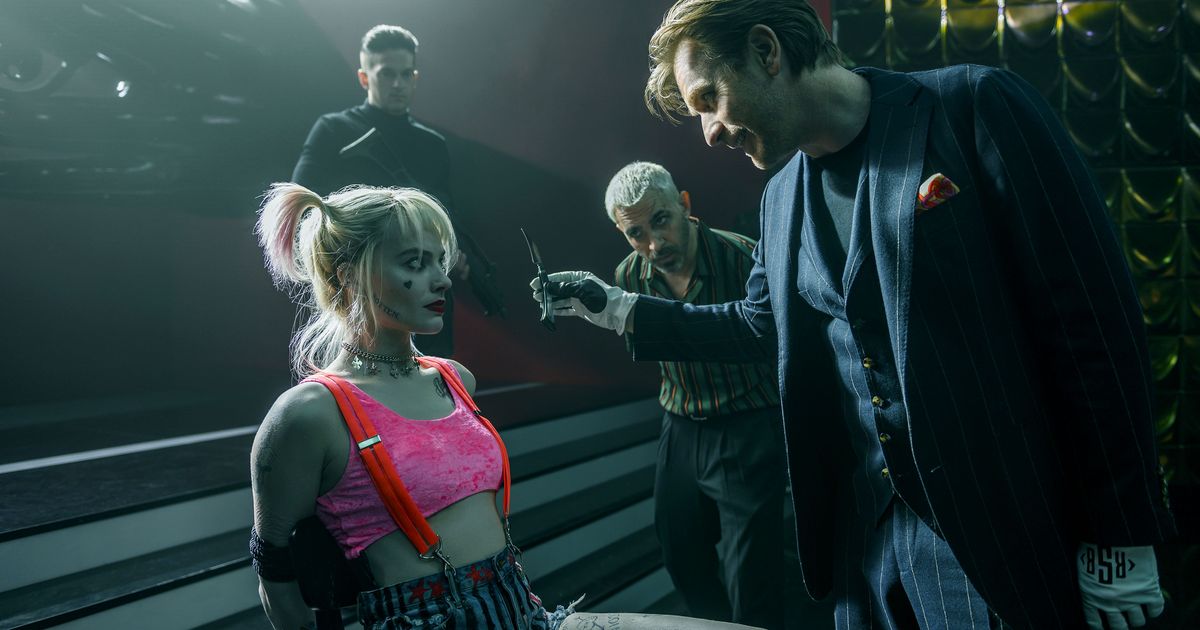
Patriarchal standards often require that women must serve the needs of men, and Mulvey asserts that men bear the look while women are the objects being looked at. Understanding these ideas, it is clear that this depiction of Harley was jarring to a patriarchal society. The film focuses on understanding the characters and their motivations through writing and costuming instead of focusing on the bodies of the characters as sex objects.
While there is no concrete reasoning for the “anti-man” sentiments about the film, it seems to stem from the fact that the women in the film are not objectified or sexualized for the benefit of men.
“A Community Of Her Own” — Harley Quinn’s Newfound Friends
Harley Quinn narrates the entirety of Birds of Prey, but the story is just as much about her breakup as it is about the corruption in Gotham City affecting the women living there. Black Canary (Jurnee Smollett), Huntress (Mary Elizabeth Winstead), and Officer Renee Montoya (Rosie Perez) are all women Harley says are also “looking for emancipation.”
The film deals with workplace sexism and the way the men in their lives affect them; Harley is just the messenger. Gotham crime lord Roman Sionis (Ewan McGregor) is the thread that ties them all together either by working for him or having a grudge against him.
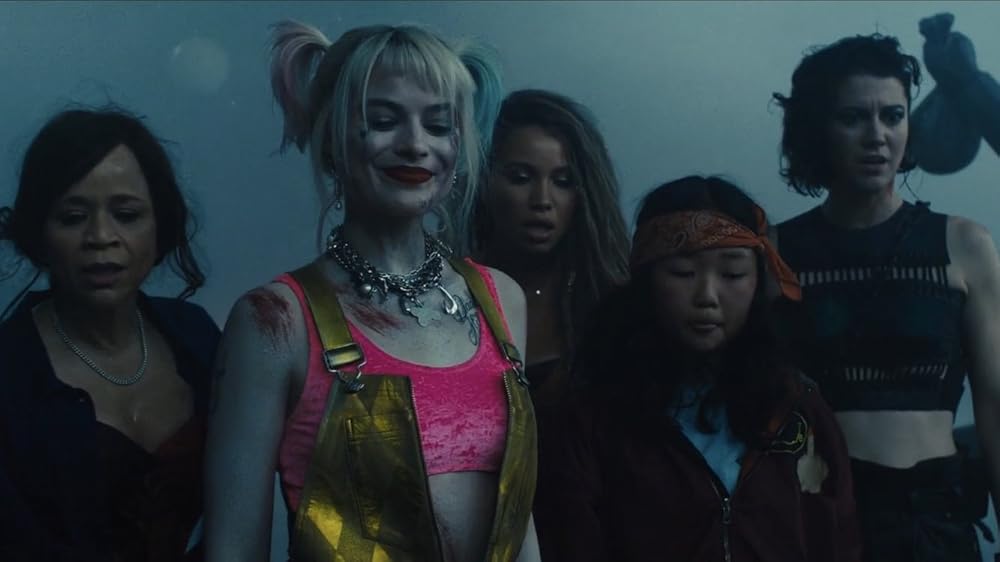
Sionis is not given any empathy or redemption in the film and acts as the embodiment of the misogyny permeating throughout Gotham. He often calls the women around him his “little birds,” which symbolizes how he views them as small and weak in comparison to him.
Birds Of Prey — Paving The Way For Equality In Comic Book Films
Unlike Suicide Squad, Birds of Prey features an actual arc for Harley Quinn that leaves a strong jumping-off point for future films to empower her as a strong female anti-hero. It is a far more empowering portrayal of Harley, as well as her fellow heroes which rejects the necessity that women need to be sexually appealing to be acknowledged by men.
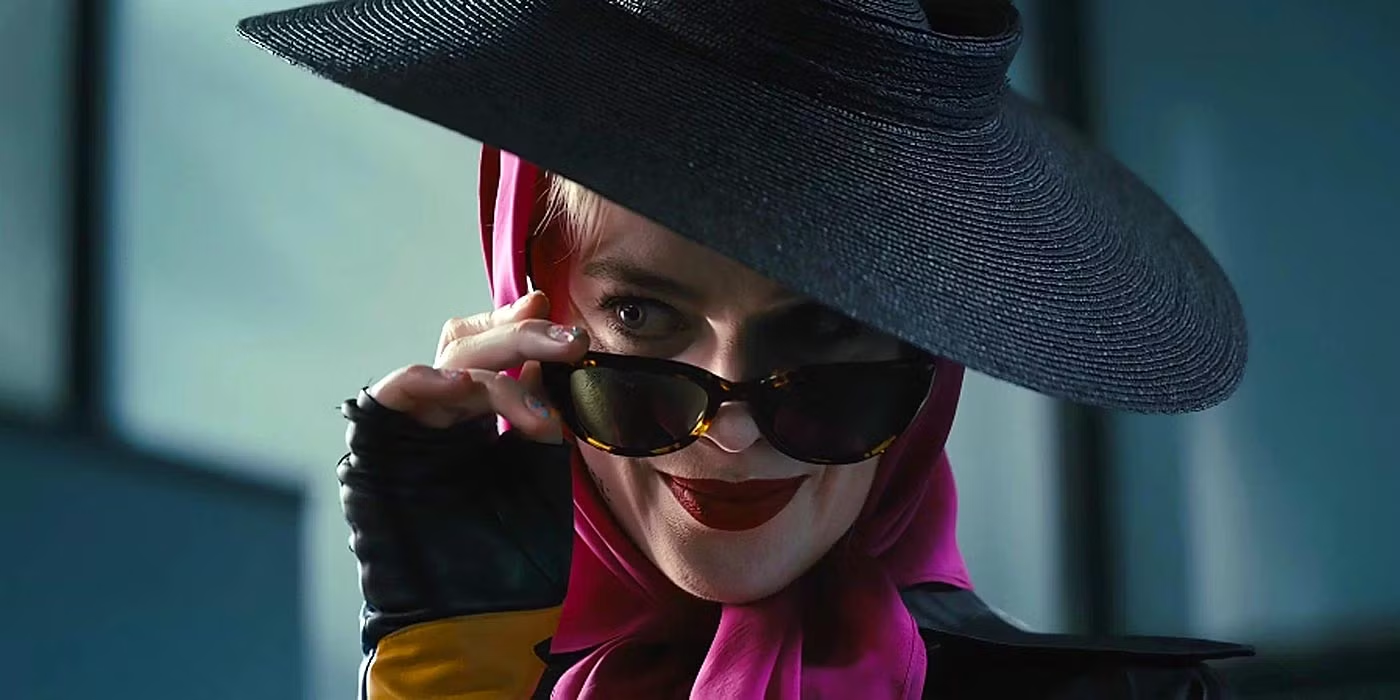
Contrary to Suicide Squad, Birds of Prey was far better received by women but garnered significant hate from men due to their unfounded belief that it was pushing an agenda. Men are empowered every day due to the volume of male comic book characters in film, but the minute women are introduced as equal, it is seen as unfair when it should be an equal playing field.
Birds of Prey altogether showed the general audience that women are just as deserving of empowerment in comic book films without being sexualized to pander to men.
Joker: Folie á Deux (2024): A Regressive Archetype
Last October, the public received the most recent portrayal of Harley in a major motion picture with Joker: Folie á Deux directed by Todd Phillips. A sequel to the Academy-Award winning Joker (2019), this film would continue to follow Joaquin Phoenix‘s Arthur Fleck as he develops a relationship with Harley “Lee” Quinzel, portrayed by Lady Gaga13.
Harley in this film is depicted as a fellow Arkham patient Arthur meets and falls in love with. She is a fan of his crimes and wants him to embrace his Joker persona, caring for him while urging him to return to it.
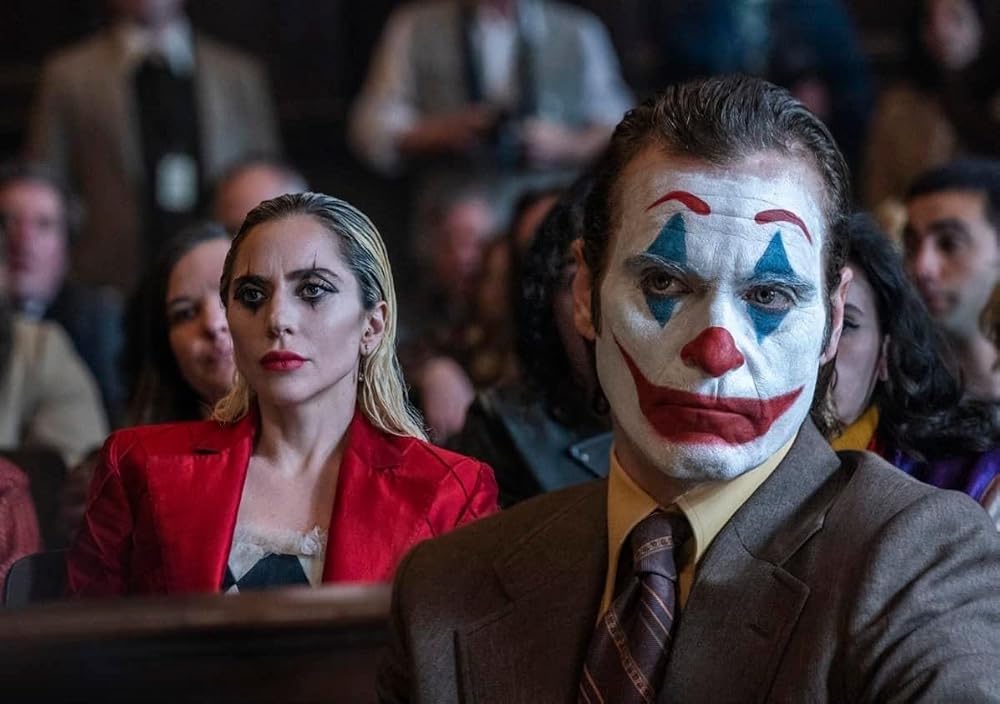
This Harley manipulates Arthur, often encouraging outspokenness and chaos to bring Joker back out. This comes to a head when it is revealed that she admitted herself to Arkham. During the trial for his crimes committed in the previous film, Harley says she lied about her history in order to get close to Arthur.
In this film, Harley is villainized in order to reaffirm its male lead as a man downtrodden by society. Harley acts as the temptation into deviance that results in Arthur’s downfall. Having previously been a character that suffered abuse at the hands of Joker, it seems odd to put Harley in the position of manipulator.
Harley Quinn As ‘Femme Fatale’ In Joker: Folie á Deux
Harley Quinn in Joker: Folie á Deux echoes the “femme fatale” archetype of film noir in the 1940s. This is most evident in her costuming, especially in the final courtroom scene in which she wears dark makeup and a red jacket. According to film theorist Mary Anne Doane, a femme fatale is often a manipulative vixen, using her outside image to manipulate men for her own gain14.
Harley’s depiction in the Joker sequel fits the bill in terms of her actions in the film, albeit with some nuance due to her being a genuine fan of Joker. Outside of her relationship with Joker, she has no significant personality traits that set her apart, effectively losing what makes Harley Quinn so memorable.
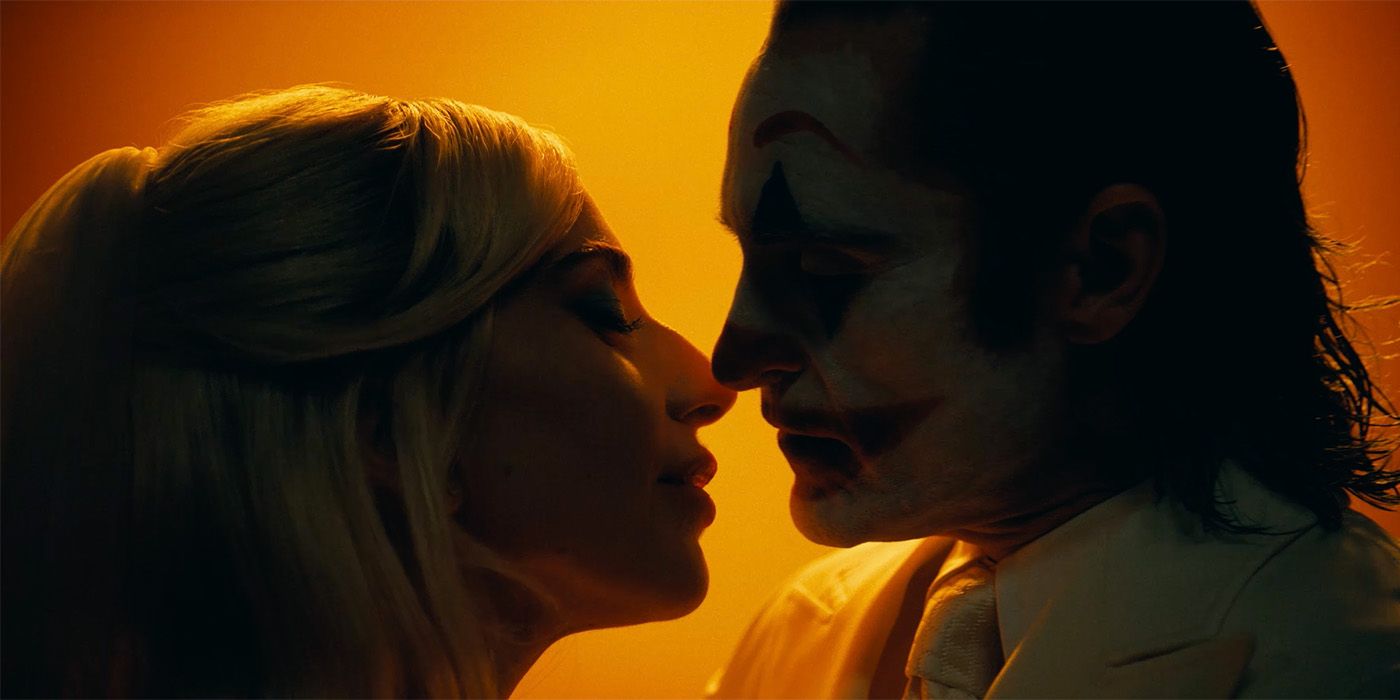
Harley Quinn’s depiction in Folie á Deux is a step backward for her character, depicting her as a shallow antagonist that affirms ideas that incels have about women. The film on its own is about the expectations fans have of people they idolize, but it is hard to ignore the depiction of Harley Quinn when it affirms negative stereotypes of conventionally attractive women that go back over eighty years.
Her efforts to manipulate him into reverting to his Joker persona assert the idea that women are not to be trusted and that they will manipulate men for personal gain. As a character who has historically faced domestic violence and abuse at the hands of her partner, it is a dangerous direction to take her character in.
Harley Quinn & The Exploration Of Gender In Comic Book Films
Harley Quinn currently has no further planned cinematic appearances confirmed, but that could easily change overnight. It is still important to note how her character has been handled by different writers and directors over the years and how these depictions shape a greater discussion about the treatment of women in comic book films.
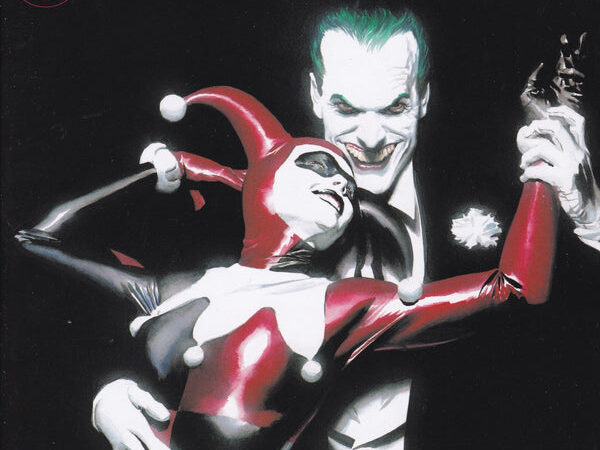
Female characters are depicted in many demeaning ways in film, such as sexualized objects (such as in Suicide Squad) or dangerous manipulators that prey on male insecurity (such as in Joker: Folie á Deux).
These examples are harmful because it puts unfair expectations onto women for how they should or should not carry themselves in relation to men. Despite the Joker sequel releasing only three months ago, writers and directors have proven that they are capable of giving Harley a meaningful arc.
Unfortunately, there will always be oppressive patriarchal forces that seek to relegate women into objects to be gazed upon in visual media. By being vocal about these negative depictions we can hold filmmakers accountable for demeaning treatments of women in both comic book films and the broader cinematic landscape.
Footnotes
- Quinn, H. (2022). Harley Quinn. Harley Quinn Wiki; Fandom, Inc. ↩︎
- “Joker’s Favor.” Batman: The Animated Series, season 1, episode
7, Fox Kids, 11 Sept. 1992. MAX. ↩︎ - Knight, Rosie. “Brilliant Women of Batman: Harley Quinn Comes Into her Own.” DC, 22 May 2019. Accessed 15 Jan. 2025. ↩︎
- “Suicide Squad (2016).” Rotten Tomatoes, Accessed 14 Jan. 2025. ↩︎
- Baker Whitlaw, Gavia. “Harley Quinn was the most-Googled Halloween costume in 2015.” Daily Dot, 1 Nov. 2015. Accessed 14 Jan. 2025. ↩︎
- Halpern, Justin, Dean Lorey and Patrick Schumaker, creators. Harley Quinn. Warner Bros. Animation and Yes, Norman Productions, 2019. ↩︎
- Mulvey, Laura. “Visual Pleasure and Narrative Cinema” Film Theory & Criticism, edited by Leo Braudy and Marshall Cohen, Oxford University Press, 2016, pp. 620-31. ↩︎
- Ayer, David, director. Suicide Squad. Warner Bros. Pictures, 2016. ↩︎
- “The Batman Adventures: Mad Love“, DC Database Wiki, Fandom, Inc. Accessed 14 Jan. 2025. ↩︎
- Costa, Isabel. “Why are We Romanticizing the Relationship between Harley and The Joker?” Her Campus, 2023. Accessed 14 Jan. 2025. ↩︎
- Yan, Cathy, director. Birds of Prey (and the Fantabulous Emancipation of One Harley Quinn). Warner Bros. Pictures, 2020. ↩︎
- Pereira, Sergio. “Birds of Prey: Most of the Negative Reviews Are From Men.” CBR, 10 Feb. 2020. Accessed 16 Jan. 2025. ↩︎
- Phillips, Todd, director. Joker: Folie á Deux. Warner Bros. Pictures, 2024. ↩︎
- Doane, Mary Anne. Femmes Fatales: Feminism, Film Theory, Psychoanalysis. Routledge, 1991. ↩︎
